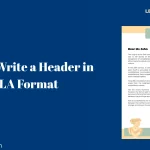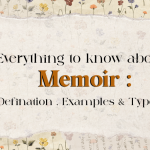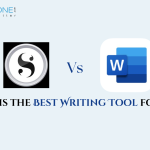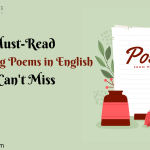Introduction to eBook Libraries
In today’s digital age, eBooks have revolutionized the way we read and access information. With the rise of electronic devices such as eReaders, tablets, and smartphones, building your own eBook library has never been easier or more accessible. In this comprehensive guide, we will explore the benefits of creating your eBook collection and provide you with practical steps to build, curate, and manage your digital library effectively.
You may also read: Fatal Flaw: Definition, Types, Example and More
Benefits of Building Your Own eBook Libraries
Convenience
Convenience is one of the foremost advantages of creating your personal eBook library. With a diverse collection of digital books at your fingertips, you can access literature, reference materials, or entertainment anytime, anywhere. Whether you’re commuting, traveling, or simply relaxing at home, having your eBook library ensures that your favorite reads are always within reach.
No longer constrained by physical books or limited selection, you can effortlessly switch between genres, authors, or topics with a few taps on your device. Moreover, digital libraries offer features like adjustable font sizes, bookmarking, and search functions, enhancing the reading experience and streamlining the retrieval of information. By curating your eBook library, you tailor it to your preferences, fostering a personalized literary haven that adapts to your lifestyle.
You may also like: 5 Key Steps to Successfully Self Publishing Your Novel
Cost-effectiveness
One of the most important benefits to consider while building your eBook library is affordability. You can save the ongoing cost of buying physical copies of your favorite books by compiling digital versions of them.
In contrast to traditional books, eBooks are frequently free or very inexpensive, which can result in significant long-term financial savings. In addition, readers may now enjoy a wide variety of tiles without breaking the bank thanks to the growth of subscription services and platforms that provide limitless access to enormous eBook libraries for a set monthly charge.
This economical method not only increases your library of books but also helps you develop a reading habit that you can stick to without breaking the bank.
Access to a Wide Range of Titles
“Access to a Wide Range of Titles”’ is a pivotal benefit of constructing your eBook library. By curating your digital collection, you open the door to an expansive array of titles spanning various genres, subjects, and authors. This breadth allows for versatile exploration, from fiction to nonfiction, classics to contemporary works.
Whether it’s diving into the depths of history, unraveling the mysteries of science fiction, or immersing oneself in the richness of literature, the diverse selection caters to every taste and curiosity. Building your eBook library grants the freedom to discover, learn, and indulge in a boundless universe of knowledge and entertainment.
You may also like: Literary Fiction Vs. Genre Literary: Definition & Examples
Step-by-Step Guide to Building Your eBook Library
Assessing Your Reading Preferences
Assessing Your Reading Preferences. Before embarking on the journey of building your eBook library, it’s crucial to assess your reading preferences. Consider the genres, authors, and topics that captivate your interest. Reflect on whether you prefer fiction or nonfiction, classics or contemporary works.
Analyze your reading habits, such as your preferred reading environment and the format you enjoy most, whether it’s novels, essays, or short stories. Understanding your reading preferences will help you curate a collection of eBooks that resonates with you, ensuring a fulfilling and enjoyable reading experience.
You may also like: Marketing Strategies for Self Published Novels | Get Noticed
Choosing the Right Devices and Apps
Building your eBook library begins with selecting the right devices and apps tailored to your reading preferences. Step one involves identifying the platform that aligns with your lifestyle, whether it’s a dedicated e-reader, tablet, or smartphone. Consider factors like screen size, display technology, and battery life.
Step two entails choosing compatible apps or platforms that offer a vast selection of eBooks in your preferred genres. Ensure the app provides features like customizable fonts, adjustable brightness, and annotation tools for an enhanced reading experience. By carefully selecting devices and apps that suit your needs, you’ll embark on a seamless journey to build your digital library.
Exploring eBook Sources
Exploring eBook sources is an essential endeavor for avid readers looking to expand their digital libraries. Start by browsing reputable platforms like Amazon Kindle, Apple Books, or Google Play Books for a wide selection of titles across various genres.
Consider subscribing to eBook subscription services such as Kindle Unlimited or Scribd for access to a vast library of titles for a fixed monthly fee. Additionally, explore free eBook sources like Project Gutenberg for classic literature or your local library’s digital lending platform.
Don’t forget to check out independent authors and publishers for unique and diverse content. By diversifying your sources, you can curate a rich eBook library tailored to your interests and preferences.
Organizing Your Collection
Building an eBook library begins with organizing your collection efficiently. Start by selecting a central platform or application to store your eBooks, ensuring compatibility across devices. Categorize your collection based on genres, authors, or themes to easily locate desired titles.
Utilize metadata tags to add descriptive information, facilitating search and organization. Regularly review and update your library, removing duplicates or outdated titles to maintain a streamlined collection.
Consider incorporating cloud storage for accessibility and backup purposes. By following these steps, you can build a comprehensive eBook library tailored to your interests, making it a seamless and enjoyable reading experience.
You may also like: Top 5 Mistakes to Avoid When Using a Book Cover Maker
Backup and Security Measures
It’s crucial to put strong backup and security measures in place as part of the step-by-step instructions for creating your eBook library. To start, choose a trustworthy cloud storage provider to protect your library of eBooks.
To prevent unwanted access to sensitive data, use encryption techniques. Make regular backups of your eBooks to several locations, such as safe servers or external hard drives. For further security, use strong passwords and think about putting two-factor authentication into place.
Update your software and devices often to protect yourself from malware and phishing scams. Ensuring the safety and longevity of your eBook library is ensured by giving priority to these backup and security methods.
You may also like: List of Nobel Prize Winners in India (Updated)
Tips for Curating a Diverse Collection
Exploring Different Genres
Exploring several genres is one of the key strategies for ensuring depth and variety while creating a diversified collection. One can find hidden gems and increase the boundaries of their collection by stepping outside of their comfort zone.
Accept the diversity of genres, which offer a variety of experiences, from science fiction to romance, from classical to modern. Seek out viewpoints, histories, and cultures from a range of backgrounds in order to promote diversity and representation.
Welcome experimentation and inquisitiveness as you weave a tapestry of stories that speak to a variety of viewers. Essentially, branching out across genres creates the foundation for a colorful, diverse collection that enthralls and educates.
Seeking Recommendations
Asking for suggestions can make all the difference in the world when it comes to collecting a varied collection. Reach out to people with different backgrounds, specializations, and viewpoints to cast a wide net. Interact with practitioners of many genres, styles, and media, as well as academics, collectors, and aficionados.
To network and learn new things, go to conferences, workshops, and exhibitions. Make use of social media groups, forums, and online platforms to establish connections with groups that are enthusiastic about art and culture.
Accept the range of perspectives and experiences that these suggestions have to give; they will add richness, diversity, and depth to your collection.
Following Authors and Publishers
Following authors and publishers who champion diversity is crucial in curating a collection that reflects a wide range of voices and perspectives. Seek out authors from marginalized communities whose narratives offer unique insights and experiences.
Engage with publishers committed to promoting diversity and inclusivity in literature, as they often feature works that challenge mainstream narratives and amplify underrepresented voices. Actively follow literary awards and recognition programs that celebrate diverse authors, as they can provide valuable recommendations for expanding your collection.
Embrace the opportunity to explore literature from various cultures, backgrounds, and identities, enriching your library with diverse stories that resonate with readers from all walks of life.
You may also like: Demystifying Self-Publishing vs. Traditional Publishing: Which Is Right for You?
Strategies for Managing and Maintaining Your eBook Library
Regularly Updating Your Collection
Strategies for managing and maintaining your eBook library revolve around regularly updating your collection. In a dynamic digital landscape, staying current is key to maximizing the utility of your library. Allocate time periodically to review and refresh your inventory, removing outdated or irrelevant titles while adding new releases or relevant content.
Utilize subscription services or newsletters to stay informed about industry trends and new releases, ensuring your collection remains diverse and comprehensive. Regular updates not only enhance the quality of your library but also keep it aligned with your evolving interests and needs, making it a valuable resource for continuous learning and enjoyment.<>
Utilizing Cloud Storage
Using cloud storage options is one way to manage and maintain your eBook library while ensuring easy accessibility and organization. By using cloud storage, consumers can safely keep their eBook collection online, protecting it from loss and making it simple to access from any internet-connected device.
By putting this idea into practice, users may collaborate and share more easily while also doing away with the requirement for physical storage space. Through the utilization of functionalities like version control and automatic syncing, users may effectively maintain their eBook libraries, guaranteeing its accessibility and currency at all times. Adopting cloud storage provides an affordable and scalable way to efficiently manage and preserve eBook collections.
Backing Up Your eBooks
Using cloud storage options is one way to manage and maintain your eBook library while ensuring easy accessibility and organization. By using cloud storage, consumers can safely keep their eBook collection online, protecting it from loss and making it simple to access from any internet-connected device.
By putting this idea into practice, users may collaborate and share more easily while also doing away with the requirement for physical storage space.
Through the utilization of functionalities like version control and automatic syncing, users may effectively maintain their eBook libraries, guaranteeing its accessibility and currency at all times.Adopting cloud storage provides an affordable and scalable way to efficiently manage and preserve eBook collections.
You may also like: Typical Errors in Book Editing to Avoid | Essential Guide
Keeping Track of Reading Progress
The book “Strategies for Managing and Maintaining Your eBook Library” covers a number of effective techniques for monitoring reading progress. Users can measure pages read, time spent, and even set reading objectives by using digital platforms or apps.
Annotations and bookmarks help you remember key passages or ideas. Sorting books according to priority or genre makes it easier to choose what to read first. Maintaining progress logs on a regular basis promotes motivation and accountability.
Additionally, seamless access to the library is ensured by device synchronizing. Participating in virtual communities or reading groups encourages dialogue and the exchange of recommendations. In the end, these techniques enable users to efficiently traverse their eBook libraries, improving both productivity and enjoyment.
Conclusion
Building your own eBook library is a rewarding endeavor that offers numerous benefits, including convenience, cost-effectiveness, and access to a vast array of titles. By following the steps outlined in this guide and implementing effective strategies for curating and managing your collection, you can create a personalized digital library that enhances your reading experience and enriches your life.
You may also read: What is Upfront fiction? Definition, Traits and Examples
Frequently Asked Questions
You can access your eBook library on multiple devices by using cloud storage services like Google Drive or iCloud to store your eBooks and syncing your reading progress across all your devices.
It’s essential to be mindful of copyright laws and licensing agreements when acquiring eBooks. Make sure to purchase or download eBooks from reputable sources and respect the rights of authors and publishers.
Many online retailers and subscription services offer free or discounted eBooks as part of promotions, sales, or subscription plans. You can also find free eBooks through digital libraries, project Gutenberg, and author websites.
Organize your eBook library by creating folders or categories based on genres, authors, or reading preferences. You can also use tags or labels to further categorize and organize your collection.
If you encounter technical issues with your eBook library, such as formatting errors or compatibility issues, try troubleshooting steps like restarting your device, updating your software, or contacting customer support for assistance.
















